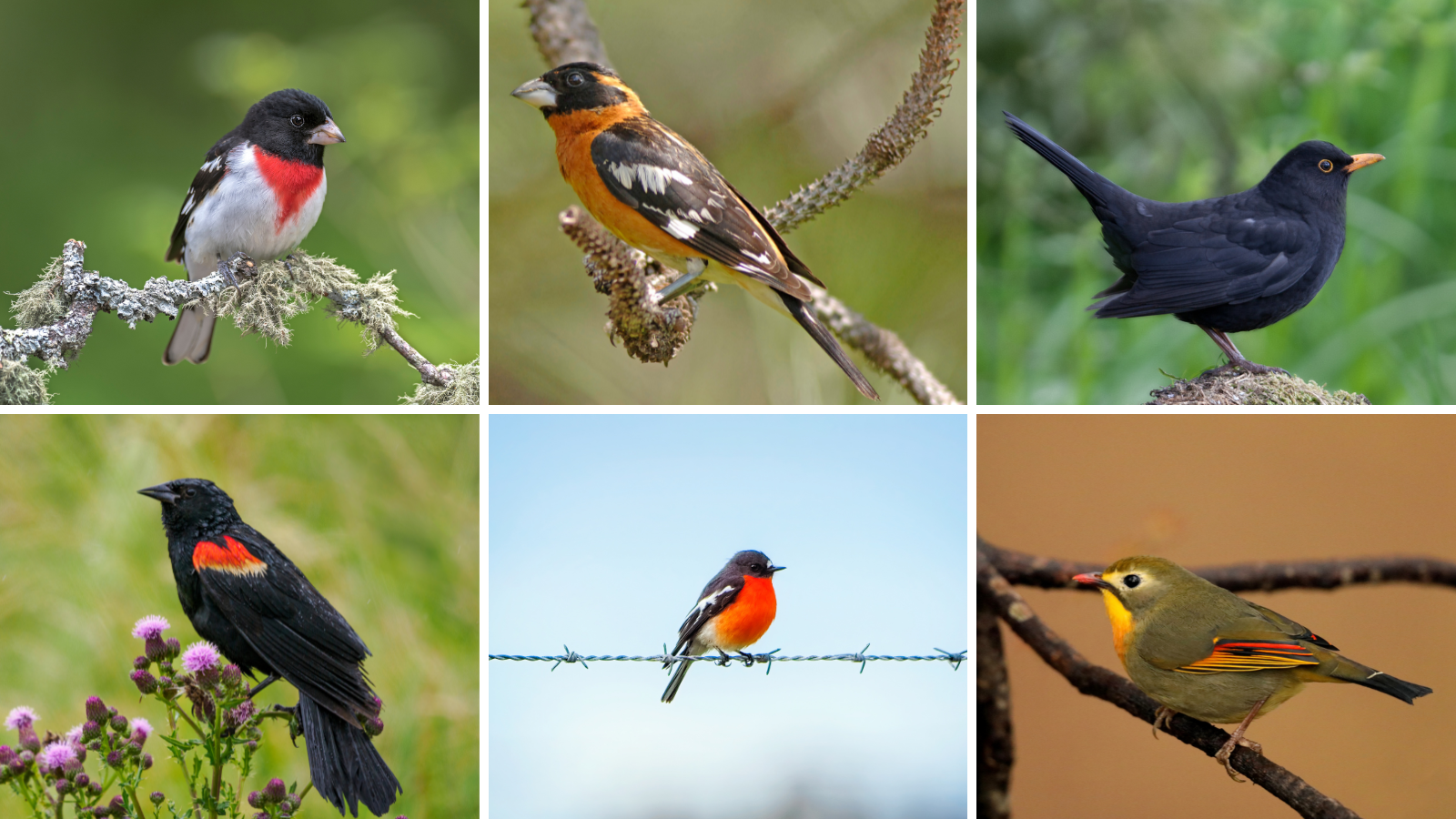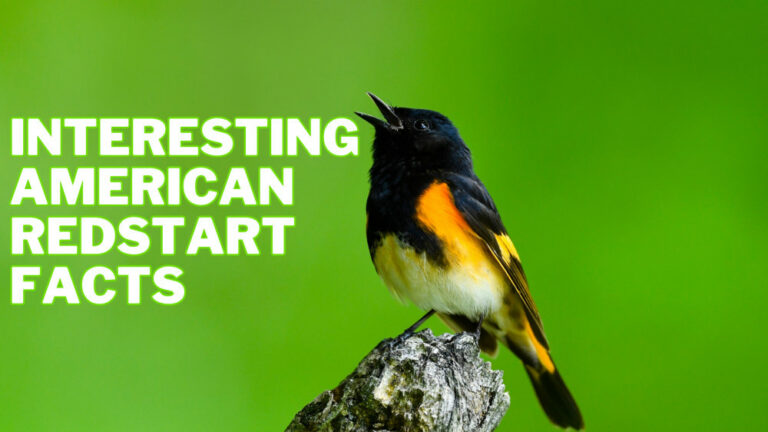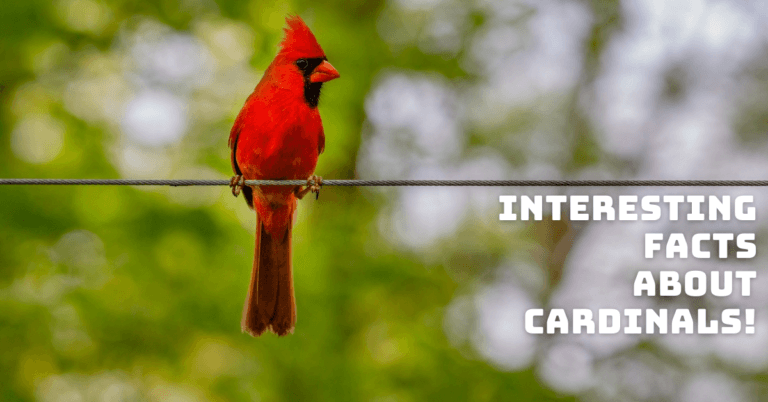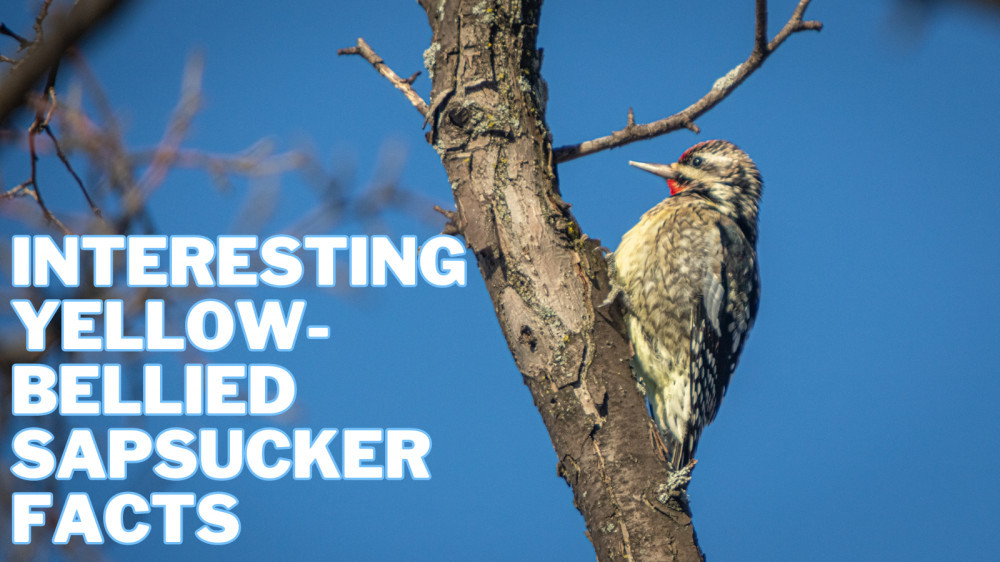Blackbirds With Orange Beaks
Blackbirds With Orange Beaks
Nature's palette is rich and diverse, offering us a remarkable array of colours and patterns in the world of birds.
Among the captivating avian species, black birds with orange beaks stand out as an amazing and visually stunning group.
These birds command attention and spark curiosity with their dark plumage contrasted by vibrant orange beaks. This article will explore some of the fascinating blackbird species that exhibit this unique combination.
From wetland dwellers to forest inhabitants, these birds showcase the intricate beauty and diversity found in the natural world.
Join us as we delve into the enchanting world of black birds with orange beaks and discover the wonders they bring to our skies.
What Is The Meaning Of Orange Beaks In Birds?
The term “orange beaks” refers to the specific colouration of the beaks or bills of certain bird species, where the beaks appear orange.
Birds display many beak colours, including black, yellow, red, blue, and orange. The orange colouration of a bird's beak can vary in intensity and shade, ranging from pale orange to deep, vibrant orange.
It is a characteristic feature of some bird species and can be used to identify or indicate certain traits, such as sexual dimorphism or age.
Blackbirds With Orange Beaks
Blackbirds with orange beaks are a captivating avian species that stand out with their distinctive colour combination.
The juxtaposition of black feathers and bright orange beaks creates a visually striking appearance, making these birds easily recognizable and fascinating. Here is a list of black birds with orange beaks:
1. European Blackbird (Turdus merula)
A species of thrush called the European Blackbird (Turdus merula) can be found in Europe and some regions of Asia. It is known for its striking black plumage, which is most prominent in adult males.
One of the distinguishing features of the European Blackbird is its bright orange beak, which contrasts beautifully with its dark feathers.
The beak is slender and slightly curved, allowing the bird to efficiently forage for its preferred diet of earthworms, insects, fruits, and berries.
The male European Blackbird is especially known for its melodious song, a common sound in its habitats, including woodlands, gardens, and urban areas.
The female has similar colouration but tends to have a slightly duller beak. These adaptable birds are often seen foraging on the ground or perched on tree branches, and they are known to be territorial during the breeding season.
The European Blackbird's striking appearance and enchanting song make it a beloved species among bird enthusiasts and a frequent visitor to many European gardens and parks.
2. American Robin (Turdus migratorius)
The American Robin (Turdus migratorius) is a widespread bird species in North America. While its overall appearance may seem primarily reddish-brown, the American Robin has a black head, back, and wings.
The contrast between its dark plumage and vibrant orange-red breast is striking, catching the attention of many bird watchers. In addition to its colourful breast, the American Robin is known for its distinct yellow beak.
The beak is thin and slightly curved, allowing the bird to feed on a varied diet, including insects, earthworms, berries, and fruits.
American Robins are migratory birds, with populations found across their range during the breeding season and then migrating south for the winter.
They are commonly spotted in open fields, gardens, parks, and woodlands, where they hop along the ground for food.
The American Robin's melodic song is often associated with the arrival of spring, as these birds are known for their cheerful and musical vocalizations.
The American Robin is a beloved and iconic bird species in North America with its characteristic appearance and beautiful song.
3. Red-Winged Blackbird (Agelaius phoeniceus)
The Red-winged Blackbird (Agelaius phoeniceus) is a striking bird species in wetland areas across North America. The male Red-winged
Blackbird displays a striking appearance with its all-black feathers and vibrant red and yellow shoulder patches, also known as epaulets.
These patches serve as territorial markers and are prominently displayed during courtship and territorial disputes. The contrast between the black feathers and the bright shoulder patches is visually striking and easily recognizable.
Another notable feature of the male Red-winged Blackbird is its orange-yellow beak, adding to its overall distinctive appearance.
In contrast, the female Red-winged Blackbird has a more subdued appearance with brownish-black feathers and paler streaks on the breast.
Red-winged Blackbirds are highly vocal birds known for their characteristic “conk-la-ree!” song, heard throughout their wetland habitats.
They are highly social birds and can be seen forming large flocks, particularly during the non-breeding season.
These birds feed on insects, seeds, and grains and are often seen foraging in marshes, meadows, and agricultural fields.
The Red-winged Blackbird's striking appearance, unique vocalizations, and preference for wetland habitats make it a fascinating and iconic species in North America.
4. Black-Headed Grosbeak (Pheucticus melanocephalus)
The Black-headed Grosbeak (Pheucticus melanocephalus) is a beautiful bird species in western North America.
As the name suggests, the male Black-headed Grosbeak features a striking black head, back, and wings, contrasting with its warm, vibrant orange beak. This colour combination creates a visually appealing and distinctive appearance.
On the other hand, the female has a more subdued colouration with brownish feathers and a pale beak.
Black-headed Grosbeaks can be found in various habitats, including woodlands, forests, and gardens, where they seek out various food sources.
Their diet primarily consists of seeds, fruits, insects, and occasionally nectar. The male Black-headed Grosbeak is known for its melodious song, which it uses to establish its territory and attract a mate.
These birds are migratory, spending their breeding season in North America and migrating to Mexico and Central America during the winter.
Their migration patterns allow one to observe them in different regions yearly. With its distinct black and orange colouration and enchanting songs, the Black-headed Grosbeak is a fascinating species to encounter in the natural habitats it calls home.
5. Black-Throated Mango (Anthracothorax nigricollis)
The Black-throated Mango (Anthracothorax nigricollis) is a stunning hummingbird species native to the Caribbean.
It displays a striking combination of glossy black plumage, an orange beak, and a distinct black throat patch, which sets it apart from other hummingbird species.
The male and female Black-throated Mangos exhibit similar colouration, with the male often having a more vibrant throat patch.
These birds are relatively small, measuring about 10 centimetres in length. One of their most notable features is their ability to hover in mid-air, facilitated by their rapid wingbeats, which can reach up to 80 beats per second.
This hovering behaviour allows them to feed on nectar from flowers with precision. While nectar is their primary food source, they supplement their diet with small insects and spiders.
The Black-throated Mango is known for its agility and acrobatic flight patterns, making it a delight to observe in its natural habitat.
It is typically found in various forested habitats, including rainforests, coastal woodlands, and gardens with flowering plants.
With its beautiful plumage, distinctive throat patch, and remarkable flying abilities, the Black-throated Mango is a captivating and sought-after species for bird enthusiasts and nature lovers in the Caribbean region.
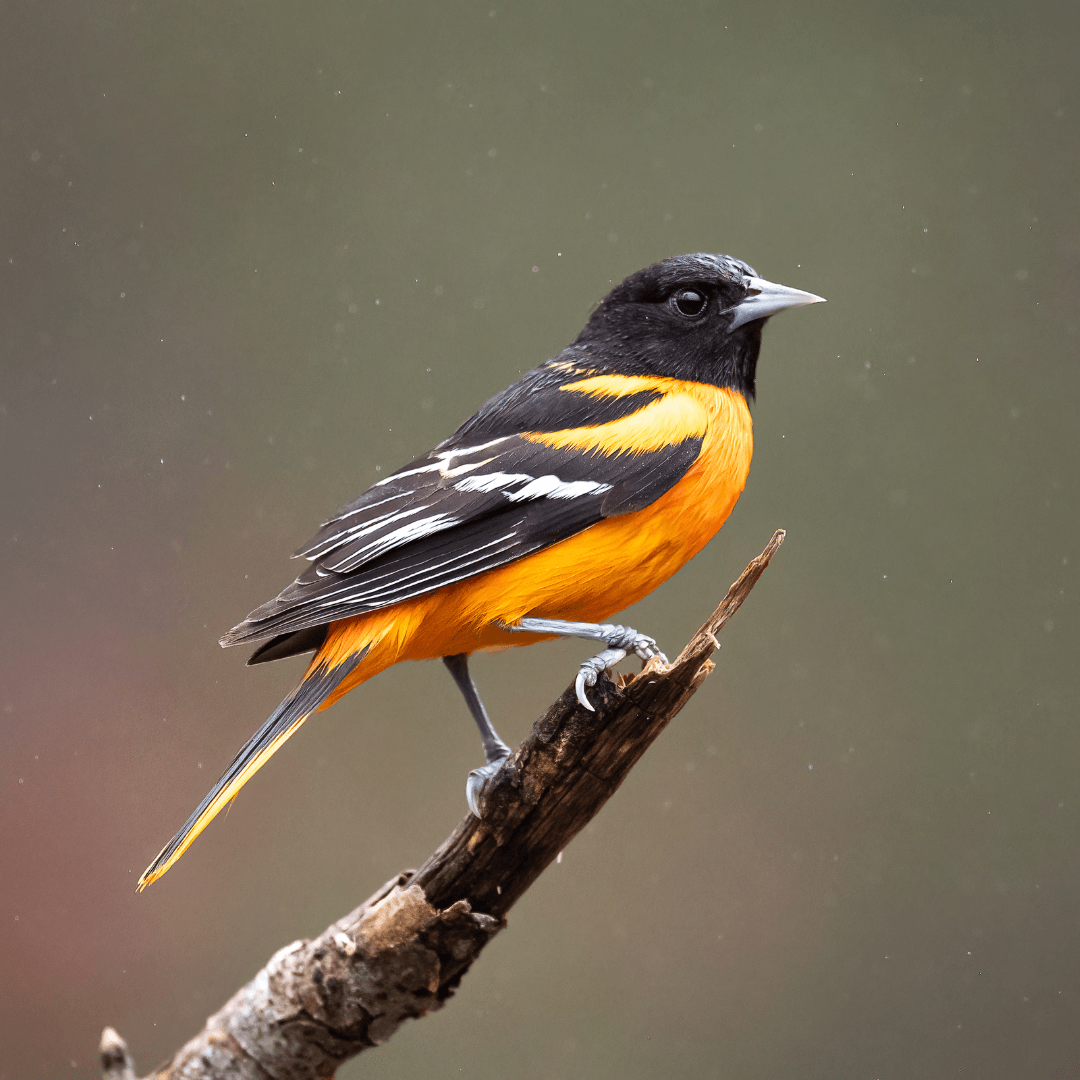
6. Black-And-Orange Oriole (Icterus auratus)
The Black-and-Orange Oriole (Icterus auratus) is a unique bird species native to Central and South America.
It showcases a contrasting colour combination with its black body and vibrant orange underparts extending from its breast to its tail. This oriole species also features an orange beak, further adding to its visual appeal.
The male and female Black-and-Orange Orioles exhibit similar plumage, with males sometimes displaying more intense colours.
In addition to its striking appearance, this bird is known for its beautiful and melodious song, which it uses to communicate and establish territories.
It is often found in forested areas, including tropical rainforests and woodland habitats, where it can forage for insects, fruits, and nectar.
The Black-and-Orange Oriole is highly skilled at maneuvering through the canopy, using its sharp beak to extract insects and its long, slender tongue to sip nectar from flowers.
The male engages in elaborate courtship displays during the breeding season, showing its vivid colours and singing to entice a mate.
Nest building and parental care are typically shared between the male and female. The Black-and-Orange Oriole is a captivating species that adds vibrancy and beauty to the tropical landscapes it inhabits, making it a sought-after sighting for birdwatchers and nature enthusiasts in Central and South America.
7. Flame Robin (Petroica phoenicea)
The Flame Robin (Petroica phoenicea) is a charming bird species native to Australia. It is known for its distinctive appearance, featuring a black head, back, wings, and a striking orange-red breast and beak.
The male Flame Robin displays more vibrant colours than the female, with its fiery red-orange breast against the black plumage. This species is relatively small, measuring around 13 to 15 centimetres in length.
The Flame Robin is a migratory bird, with populations moving across different parts of Australia based on seasonal changes and food availability.
During the breeding season, which typically occurs from late winter to early spring, the male Flame Robin establishes and defends its territory through displays of aerial flights and vocalizations.
It constructs a cup-shaped nest made of grass, bark, and moss in tree hollows or other sheltered locations. Both parents alternate incubating the eggs and feeding the hatchlings after the female lays a clutch.
The Flame Robin primarily feeds on insects and other small invertebrates, which it captures by perching on branches or hovering in mid-air.
This species is often found in open forests, woodlands, and grasslands, where it can easily forage and find suitable nesting sites.
The Flame Robin's vibrant colours and energetic behaviour make it a favourite among birdwatchers and nature enthusiasts in Australia, as it adds a splash of colour to the natural landscapes it calls home.
8. Red-Billed Leiothrix (Leiothrix lutea)
Southeast Asian woodlands are home to the Red-billed Leiothrix (Leiothrix lutea), a stunning bird species.
While its overall plumage is predominantly green, the Red-billed Leiothrix exhibits black feathers on its head, wings, and tail, creating a beautiful contrast against the vibrant colours.
One of its most distinguishing features is its bright orange beak, which adds colour to its appearance.
This bird belongs to the Old World babbler family and is known for its melodious song, often heard echoing through the dense foliage of its habitat.
The Red-billed Leiothrix is highly social and often seen in small flocks, moving agilely through the trees and shrubs for food. It has a varied diet, feeding on insects, berries, nectar, and even small vertebrates.
This species' breeding season normally occurs in spring and summer, when the males display their vivid colours and musical songs to entice females.
The female constructs a cup-shaped nest using twigs, leaves, and moss, usually concealed within dense vegetation. Both parents take part in caring for the young and incubating the eggs.
The Red-billed Leiothrix is highly adaptable and has been introduced to other regions, including parts of Hawaii and the United States, where it has established small populations.
Its colourful plumage, delightful song, and lively presence make the Red-billed Leiothrix a cherished bird among bird enthusiasts and a delightful sight in its native Southeast Asian habitats.
9. African Pied Hornbill (Tockus fasciatus)
The African Pied Hornbill (Tockus fasciatus) is a captivating bird species native to sub-Saharan Africa.
It is recognized for its medium-sized build, characterized by a black body, contrasting white belly, and a striking orange beak.
One of its most prominent features is the casque, a unique structure on top of its beak that varies in size and shape among individuals. The casque is believed to play a role in vocalization and may help amplify the bird's calls.
The African Pied Hornbill is known for its loud, distinctive call, which can be heard echoing through the forests and savannas where it resides.
It is a social bird often observed in small groups or pairs, perched on branches or flying gracefully between trees.
This hornbill species primarily feeds on fruits, insects, and small animals, foraging for food in the trees and on the ground.
They play an essential ecological role as seed dispersers, aiding in the regeneration of plant species in their habitat.
During the breeding season, the female African Pied Hornbill seals herself inside a tree cavity using a combination of mud, feces, and regurgitated food, leaving only a small slit for the male to pass food through.
This behaviour is known as “cavity nesting” and helps protect the female and the nesting young from predators. Once the chicks are mature enough, the sealed cavity is broken open, and the family emerges.
The African Pied Hornbill is a fascinating species that adds colour and vocal charm to the African landscape, making it a cherished sight for birdwatchers and nature enthusiasts.
FAQ
1. Are Blackbirds With Orange Beaks Found In North America?
Answer: Blackbirds like the Red-winged Blackbird and the Common Grackle do not have orange beaks in North America. The European Blackbird is occasionally seen in North America but is not native to the continent.
2. Why Do Male Blackbirds Have Orange Beaks?
Answer: The orange beak in male blackbirds is a result of sexual selection. The bright colour may signal good health and genetic fitness to potential mates, making them more attractive during the breeding season.
3. Do Female Blackbirds Also Have Orange Beaks?
Answer: Female European Blackbirds generally have brown beaks, which are less vibrant compared to the males' orange beaks. The colour difference is part of the species' sexual dimorphism.
4. How Can I Attract Blackbirds With Orange Beaks To My Garden?
Answer: To attract European Blackbirds, provide food such as fruits, seeds, and insects. Creating a habitat with dense shrubs or hedges can also provide shelter, encouraging them to visit and possibly nest.
5. Are Blackbirds With Orange Beaks Good Singers?
Answer: Yes, European Blackbirds are known for their melodic and rich song, especially the males, who sing to establish territory and attract a mate.
6. Do Blackbirds With Orange Beaks Migrate?
Some populations of European Blackbirds migrate, especially those in colder northern regions. However, many remain in their territories year-round if food is available.
7. Can I Keep A Blackbird With An Orange Beak As A Pet?
Keeping wild birds like the European Blackbird as pets is generally not recommended or legal. They thrive best in their natural environment, where they can forage, breed, and live freely.
Conclusion
In conclusion, black birds with orange beaks are a fascinating group of avian species that capture our attention with their striking colouration.
From the European Blackbird to the Red-billed Leiothrix, these birds exhibit a unique combination of black feathers and vibrant orange beaks.
This colour contrast adds to their visual appeal and serves important purposes, such as attracting mates, communicating with other birds, or foraging for food.
Whether found in forests, wetlands, or open grasslands, these black birds with orange beaks bring beauty and wonder to their respective habitats.
Observing their behaviour, listening to their songs, and appreciating their ecological roles remind us of the diversity and splendour of the avian world.
Through continued research and conservation efforts, we can ensure the preservation of these remarkable birds and their natural environments for generations to come.
I trust you enjoyed this article on Blackbirds With Orange Beaks. Please stay tuned for more blog posts to come shortly. Take care!
JeannetteZ
>>>Please click here to read my all-inclusive article about Why Is Wildlife Important And How Can We Protect It<<<
>>>Are you interested in Natural Healing And Stress Relief through Herbs? Please click here for my #1 Recommendation<<<
Your Opinion Is Important To Me
Do you have thoughts, ideas, or questions? I would love to hear from you. Please leave your questions, experiences, and remarks about the Blackbirds With Orange Beaks article in the comments below. You can also email me at Jeannette@Close-To-Nature.org.
Disclosure
This post may contain affiliate links. As an Amazon Associate and other affiliate programs, I earn from qualifying purchases at no extra cost to you. Please read my full affiliate disclosure.
You might also enjoy these blog posts:
Interesting Yellow-Bellied Sapsucker Facts
Interesting American Redstart Facts
How Natural Calm Gummies Reduce Stress
Best Holistic Self-Care Practices
Best Holistic Wellness Tips For Everyday Life

